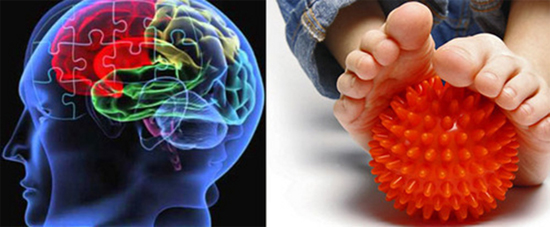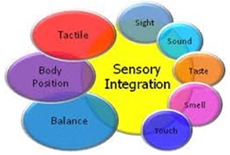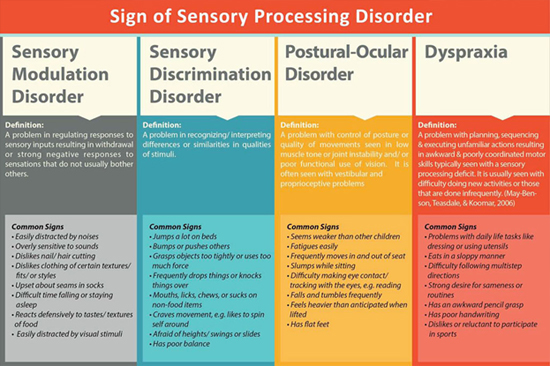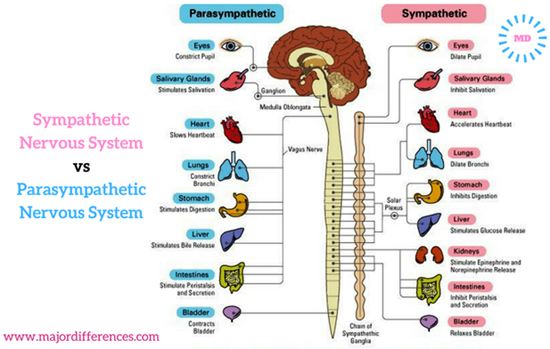Sensory Integration Therapy for Adults and Children

What is sensory integration?
Sensory Integration is defined as "the neurological process that organizes sensation from one's own body and from the environment and makes it possible to use the body effectively within the environment." 1
Sensory integration dysfunction is defined as "the inefficient Neurological processing of information received through the senses, causing problems with learning, development and behavior. 2
Signs of Dysfunction:
- Dislikes being touched
- Anxiety about surroundings, discomfort with food
- Oversensitivity to touch and feel to certain textures from clothing and objects
- Problems with balance (Frequent falling, tripping)
- Problems with detecting body's position in space
Sensory Integration Therapy (SIT)
Designed to restore the individual's ability to integrate sensory information by enhancing each of these systems." 3
SIT Incorporates:
Vestibular stimulation

- Swinging
- Rolling
- Bouncing on Exercise Ball
- Jumping on a trampoline
- Riding on scooter boards
Proprioceptive and Tactile Stimulation
- Deep pressure sensation stimulation
- Joint compression
- Playing with textured objects (i.e. toys)
Many activities to integrate sensation include:
- Meditation for calming and emotional regulation 2
- Sensory Awareness Activities
- Slow movements, rhythmic movements, and trunk balance on exercise ball
- Wearing a weighted vest
- Being brushed or deeply touched
- Oral motor exercises
- Incorporating an obstacle course
- Modifications to environment (changing the lighting, sound, furniture) 1
- Calming techniques (counting to 20 while focusing on an activity)
Reported Benefits of SIT
- Enhanced ability to focus at work, school, during educational, therapeutic, and social environments.
- Reduction in disruptive behaviors such as self-injury or repetitive motions.
- Generalized improvements in nervous system functioning, reflected in high level cognitive activity such as work productivity, reading and language. 1
People who can benefit from SIT
Both adults and children:
- Many times "Normal" adults don't even realize they have these issues, they just thought they were different or had strong dislikes throughout their lives.
- Many think they just have very different personalities and that not many people understand them.
- Adults have difficulties co-working with peers
- Adults and children have difficulties getting along with families/ friends
- Children have difficulties figuring out "what's wrong with me", and adults usually scold the child for doing things the child himself or herself can't explain.
- Those with Physical disabilities such as Cerebral Palsy
- Learning disabilities such as ADHD
- Developmental Disabilities such as Autism 1

Parasympathetic vs. Sympathetic Nervous Systems
The parasympathetic and sympathetic nervous systems are branches of our autonomic nervous system. This system regulates smooth muscle organ functions. The parasympathetic nervous system is for "rest and digest", calming us down. The sympathetic nervous system is for "fight or flight" which excites us to take action.

Sometimes our brain may have an imbalance of the parasympathetic and sympathetic nervous system. It is common that the sympathetic nervous system may be over excited and the parasympathetic nervous system may be inhibited. In our society today we have many stresses that cause hyperactive sympathetic and insufficient restoration of the parasympathetic system.
Examples of stresses:
- Work requirements, over time work
- Commute distances to from work
- Family demands including driving children to many appointments and activities
- Over-commitment to work, friends, and family
- High priority for everything- (we need to prioritize our own health over other commitments)
- Information overload- social media, friends, family, colleagues, entertainment shows, etc.
- A sense of "not enough time in the day" to do all that we want to do. This sense is itself is a stressor, causing disappointment and anxiety.
- Children have immature brains and need time to integrate. They also have similar difficulties but are not able to understand or identify their problems.
- Children with developmental delays or altered neurological responses have an even more difficult time, thus more anxiety and adverse responses to their environment and peers.
Those with hyperactive Sympathetic system can have the following symptoms:
- Anxiety, Depression
- Attention problems
- Complex Regional Pain Syndrome
- Fibromyalgia
- Forgetfulness
- High Blood Pressure
- Inflammations
- Insomnia
- Irritable Bowel Syndrome
- Memory – problems with retention, short term memory loss
- Multiple allergies
- Multiple Sclerosis
- Muscle and Joint pain 5
- Chronic Pain
- Reflex Sympathetic Dystrophy
- Repeated infections/ slow to heal
- Sleep and Mood Disturbances
- Stress
- Ulcerative Colitis
Balancing out the autonomic system is important for our homeostasis. Regulating our body's internal workings will in turn improve our personal satisfaction and lead to an increased sense of well-being and actually improve our health!
- Children who get treatment will improve their own being as well as their caregivers from reduced stress to everyone involved
- Adults who practice improved parasympathetic responses will also become better adults
- Healthier individuals are able to provide more calming atmosphere for themselves and people around them.
Techniques to Reduce Sympathetic responses by enhancing Parasympathetic responses:
- Meditation
- Massage
- Breathing techniques
- Yoga
- Tai Chi
- Minimize mental stress
- Prioritizing life's needs vs wants
- Ensure rest and active days are covered by a training program 6
Important to do Meditation
Meditation is defined as a practice involving the mind and body that is used for increasing calmness and physical relaxation, improving psychological balance, coping with illness, and enhancing overall health and well-being. Four elements of medication include a quiet location, a focus of attention, a comfortable specific posture and an open attitude. 5
Meditation can help integrate sensory difficulties and enhance parasympathetic responses.
Different types of meditation work best for individuals with different likes and needs. It's important to choose a topic of meditation that's best suited for each individual.
See more information on the Meditation site www.CoreRadiance.me
Here at Ginger Health,
weteach Sensory Integration and Meditation techniques to
improve Sensory Integration and
restore balance to the Autonomic Nervous System.
Call 813-631-9700 To Schedule an Appointment
See you soon!
References
- AYRES, A. J. (1972), "Treatment of Sensory Integrative Dysfunction". Australian Occupational Therapy Journal, 19: 88. doi:10.1111/j.1440-1630.1972.tb00547.x
- Kranowitz, Carol Stock. The Out-Of-Sync Child Has Fun. 1st ed. New York: Berkley Pub. Group, 2003. Print.
- Case-Smith, Jane, Lindy L. Weaver, and Mary A. Fristad. "A systematic review of sensory processing interventions for children with autism spectrum disorders." Autism 19.2 (2015): 133-148.
- Smith, T., Mruzek, D. W., &Mozingo, D. (2015). Sensory integration therapy. Controversial therapies for autism and intellectual disabilities: Fad, fashion, and science in professional practice, 247-269.
- https://nccih.nih.gov/health/meditation/overview.htm#hed6
- http://www.ptonthenet.com/articles/activate-the-parasympathetic-nervous-system-to-improve-recovery-3910







